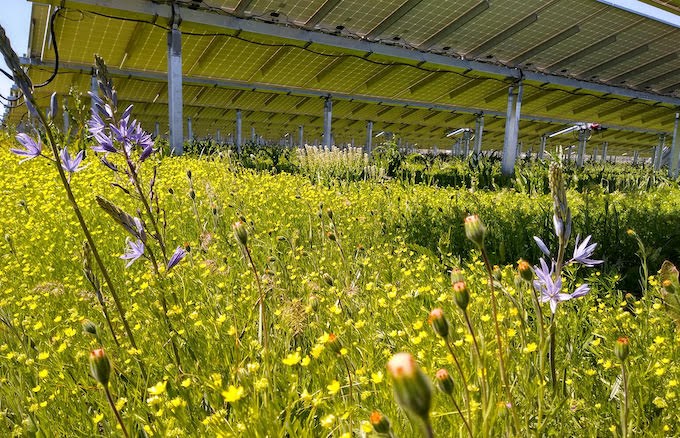GOLDEN — Scientists at the National Renewable Energy Laboratory in Golden are researching how planting wildflowers, clovers and other vegetation at solar farms can help improve water quality.
Megan Day is the lab's senior energy planner. She said instead of laying gravel, which requires regular use of herbicides to keep weeds from blocking out the sun, adding plants with deep roots will help soak up stormwater.
"So it's a much better and more effective way to control stormwater and clean the water, by preventing it from running off the site and causing erosion and sedimentation into nearby waterways, streams, wetlands," Day said.
Some 350,000 acres of ground-mounted solar arrays currently operate in the United States, and as demand for cheaper renewable energy grows, landowners are projected to lease 3 million acres for solar by 2030.
Day said it's important for developers to know up front whether farms should be treated like parking lots, like meadows, or something in between.
If solar facilities can be designed to soak up sun and stormwater, Day said developers can avoid costly mitigation strategies such as retention ponds. Flowering plants also provide habitat for pollinators needed for a host of crops, which Day said might also bring more of the nation's farmers into the solar business.
"It's predictable, good revenue," she said. "So it's a great opportunity for farmers to stabilize their revenues, get through the winter. Solar generates in the winter too."
The benefits of solar are largely uncontested. Facilities generate electricity without pollution and also generate jobs, especially during construction. Day said if they haven't already, communities across the U.S. are likely to see some kind of solar development in the near future.
"And they're going to want it to be done right. They want to have solar facilities that fit into their community that don't have impacts that are negative, and they want benefits," she said. "We're trying to just increase those benefits."


.jpg;w=120;h=80;mode=crop)
